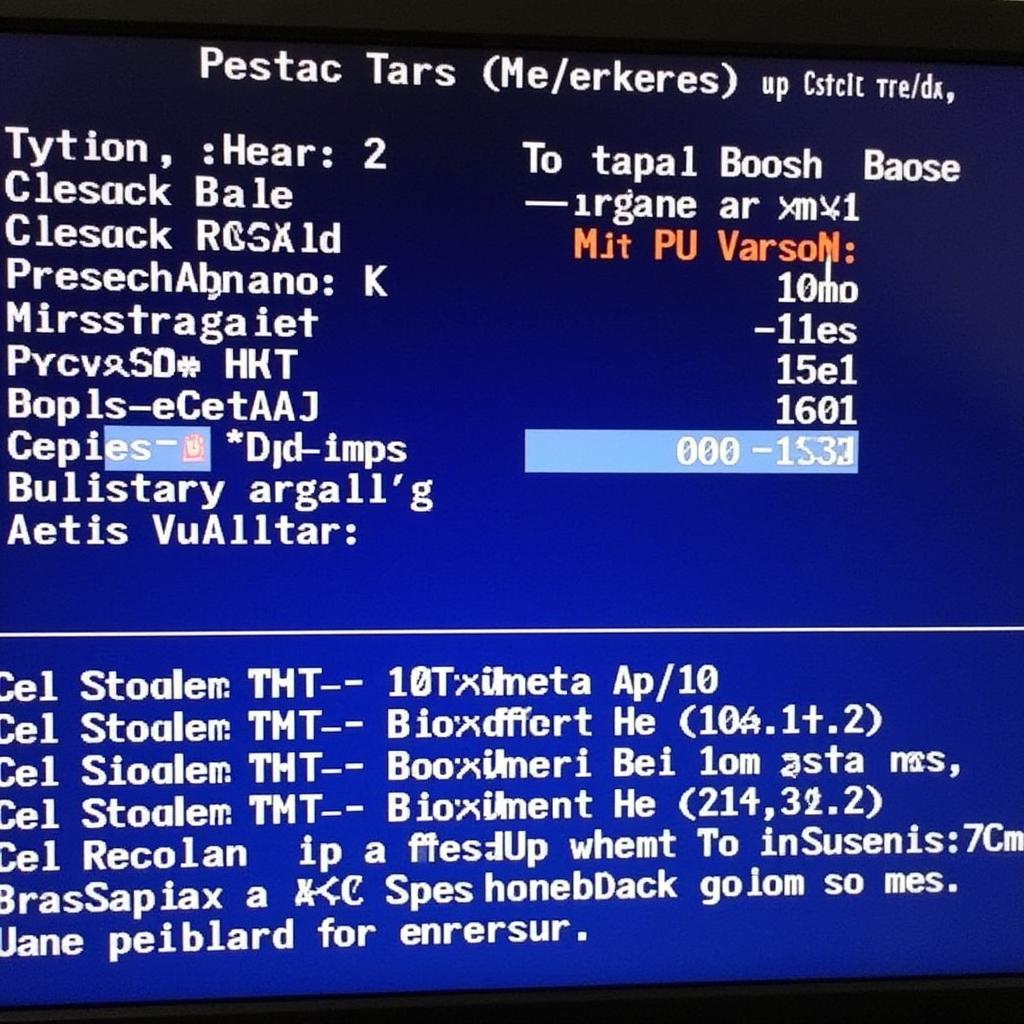Your cart is currently empty!

Understanding and Troubleshooting VCDS Block 115
VCDS Block 115 is a crucial diagnostic block for many modern turbocharged vehicles. This block provides valuable data about your vehicle’s boost pressure control system, helping pinpoint issues that can affect performance, fuel economy, and overall engine health. This article will delve into the intricacies of Block 115, explaining its parameters, common problems, and how to effectively troubleshoot them using VCDS (Vag-Com Diagnostic System).
Understanding the data within Block 115 can be the key to resolving frustrating turbo-related issues. Whether you’re a car owner, a mechanic, or a seasoned automotive technician, this guide will empower you with the knowledge to interpret and utilize the information within this vital diagnostic block. Want to vcds test turbo? This guide will help you understand the data you’ll be working with.
Decoding the Data in VCDS Block 115
Block 115 primarily deals with boost pressure regulation. It displays actual and specified boost pressure values, allowing you to compare what the ECU (Engine Control Unit) is requesting versus what the turbocharger is delivering. This comparison is essential for identifying discrepancies that can indicate a problem. Other crucial parameters in Block 115 might include N75 duty cycle (the control signal sent to the turbocharger actuator), charge air temperature, and ambient air pressure.
Common Problems Associated with VCDS Block 115
Several common problems can be diagnosed using Block 115. These include overboost (boost exceeding the specified limit), underboost (boost falling short of the specified target), fluctuating boost, and sticky vanes in variable geometry turbochargers (VGTs). Identifying these issues requires careful observation of the data within Block 115, looking for significant deviations between actual and specified boost pressure. For a more direct test of your turbo actuator, consider a vcds turbo actuator test.
What does it mean if my actual boost is lower than specified boost in Block 115?
If your actual boost is consistently lower than specified, this suggests an underboost condition. This could be due to a variety of reasons, such as a faulty N75 valve, a leak in the boost system, or a problem with the turbocharger itself.
What are the typical causes of overboost in VCDS Block 115?
Overboost, where actual boost exceeds specified boost, can be caused by issues like a stuck N75 valve, a faulty boost pressure sensor, or problems with the wastegate.
 VCDS Block 115 Overboost Condition
VCDS Block 115 Overboost Condition
Troubleshooting with VCDS Block 115: A Step-by-Step Guide
- Connect your VCDS interface to the vehicle’s OBD-II port.
- Select the appropriate control module (usually Engine).
- Go to Measuring Blocks (Group 003).
- Enter “115” in the block number field.
- Observe the displayed values for actual and specified boost pressure. Checking the mbar vcds block can provide further insights into pressure readings.
- Compare the actual and specified boost values under different driving conditions.
- Analyze the N75 duty cycle to assess the ECU’s response to boost deviations.
“When troubleshooting with Block 115, remember that context is key,” says automotive expert, John Miller, ASE Certified Master Technician. “The surrounding data, like engine speed and load, can significantly influence the interpretation of boost pressure readings.”
Conclusion: Mastering VCDS Block 115
VCDS Block 115 is an invaluable tool for diagnosing boost-related issues in modern vehicles. By understanding the parameters within this block and following the troubleshooting steps outlined in this article, you can effectively pinpoint and resolve problems that impact performance and engine health. Remember, consulting with a qualified technician is always recommended for complex issues. You can reach out to us at vcdstool for further assistance at +1 (641) 206-8880 and our email address: vcdstool@gmail.com or visit our office at 6719 W 70th Ave, Arvada, CO 80003, USA. Mastering VCDS Block 115 empowers you to take control of your vehicle’s diagnostics and ensure optimal performance. If you’re dealing with EGR issues, you might also find information on vcds egr adaptation tdi helpful. For specific error codes like P0033, check out our resource on p0033 vcds.
by
Tags:
Leave a Reply